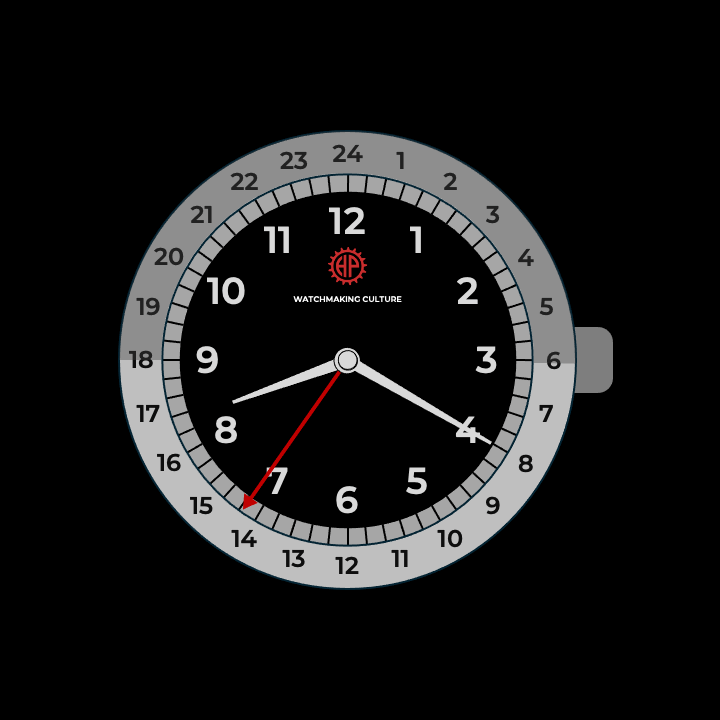TIME ZONES
In 1884, the International Meridian Conference in Washington established and adopted a universal 24-hour time system, starting at midnight at the Greenwich Meridian. Before this, each city set its own time based on its exact longitude. For instance, when it was 12:00:00 in Geneva, the time in La Chaux-de-Fonds was 12:01:36, while in Paris, it was 11:44:59. This standardisation of time was driven by the rise of industry and rail transport, particularly to make train schedules more comprehensible and synchronised. The adoption of a universal time standard later led to the development of watches displaying multiple time zones, either a few selected ones or all 24 (World Time watches).
In 1963, Greenwich Mean Time (GMT), based on the Greenwich Observatory, was replaced by Coordinated Universal Time (UTC). This new global standard was widely adopted across most countries. UTC represents a time scale positioned between International Atomic Time (TAI)—which is highly stable but disconnected from the Earth’s rotation—and Universal Time (UT), which is directly linked to Earth’s rotation and therefore slowly variable. A modification of UTC is currently in progress to eliminate the need for leap seconds, with this change expected to take effect by 2035. The introduction of GMT and later UTC paved the way for watches capable of simultaneously displaying multiple time zones, whether a select few or all 24 global time zones (Universal Time watches).

SECOND TIME ZONE
Different mechanisms and display types allow for the indication of one or more additional time zones alongside local time. The second time zone is typically displayed on a 24-hour scale or complemented by a day/night indicator to prevent confusion between morning and afternoon hours.

UNIVERSAL TIME
A Universal Time display simultaneously shows the time across all 24 time zones. This complication typically consists of a rotating disc and a fixed ring, arranged concentrically. Both are divided into 24 segments—one marked with 24-hour graduations, while the other displays the names of reference cities for each time zone. The disc or ring completes a full rotation every 24 hours, allowing for an instantaneous and simultaneous reading of the time in all major time zones worldwide.
BECOME A CONTENT CONTRIBUTOR
HOROPEDIA is a participative knowledge platform and we invite all those who wish to contribute to this adventure of sharing watchmaking knowledge to join us.
It can be additional explanations, images or other illustrations or terms not yet identified that deserve to be.
